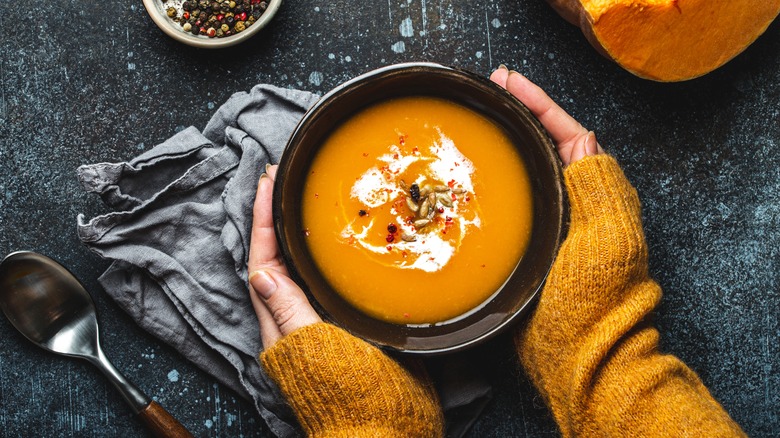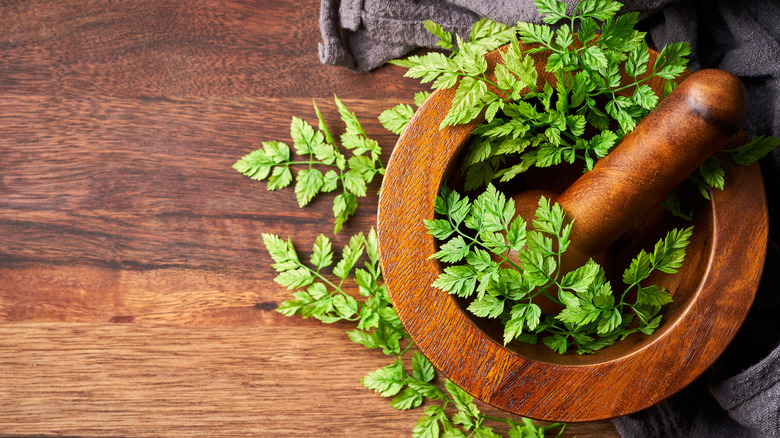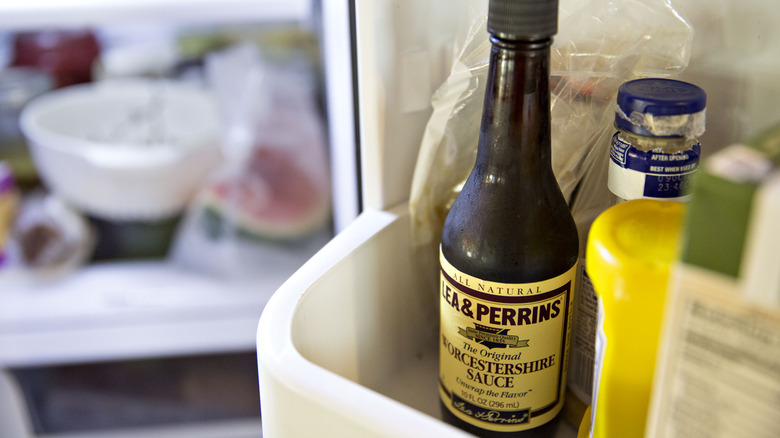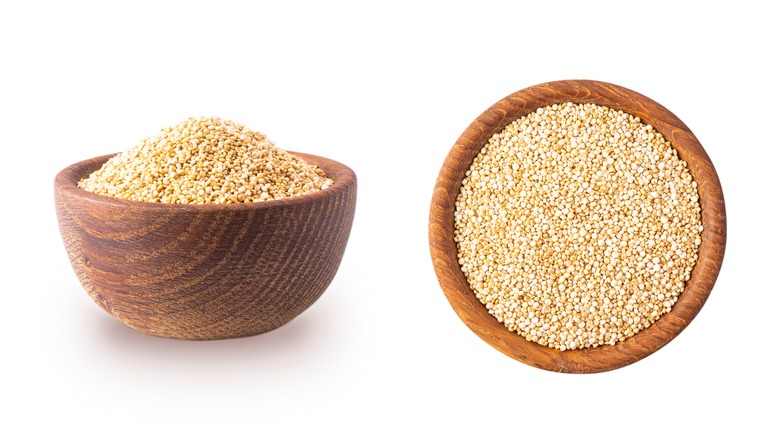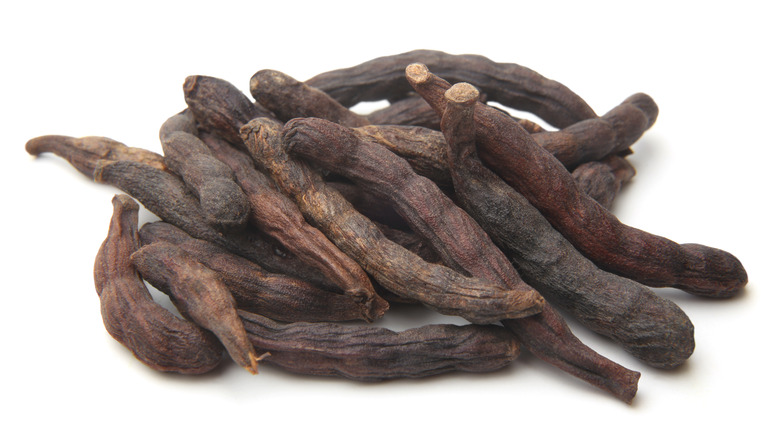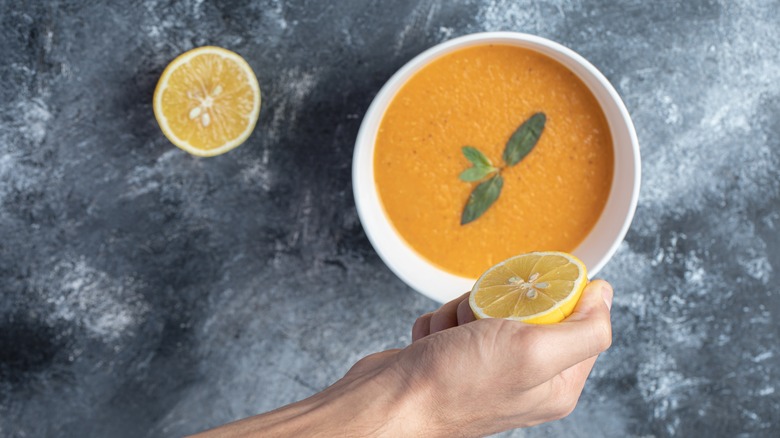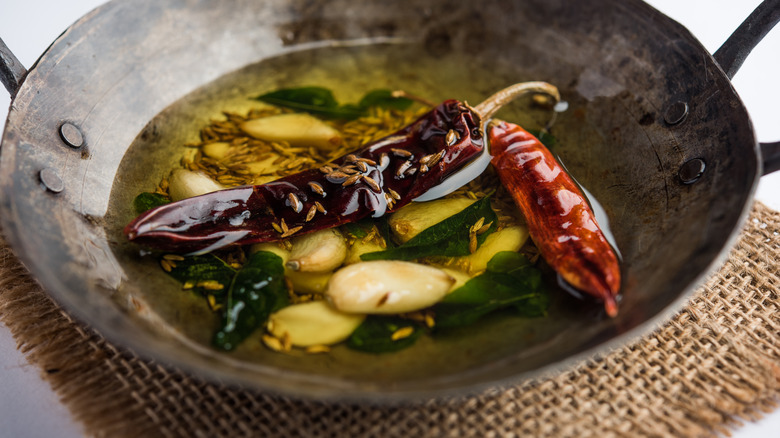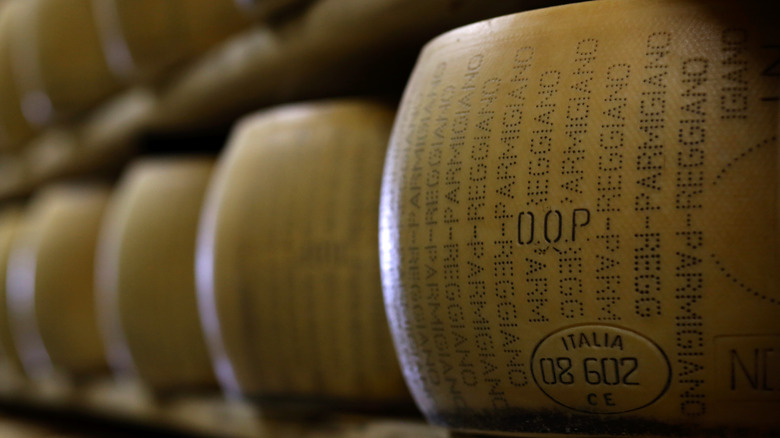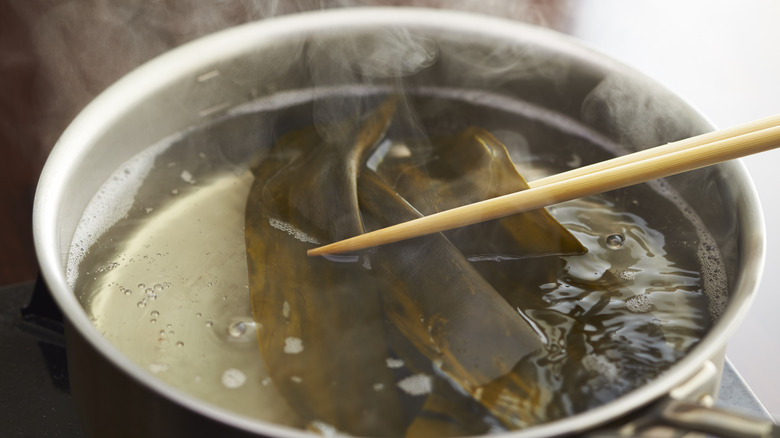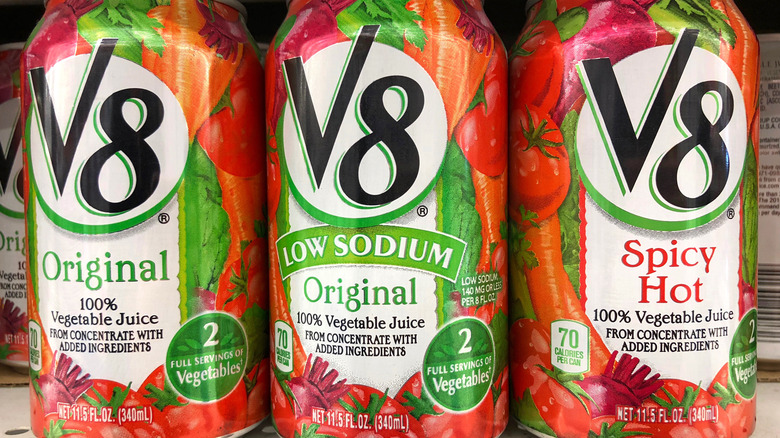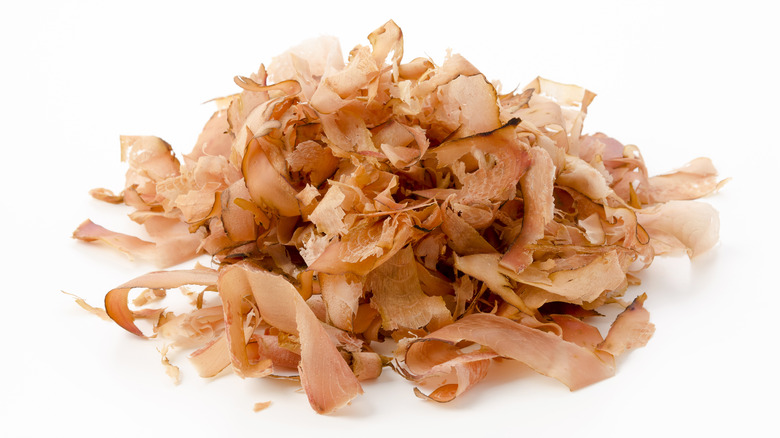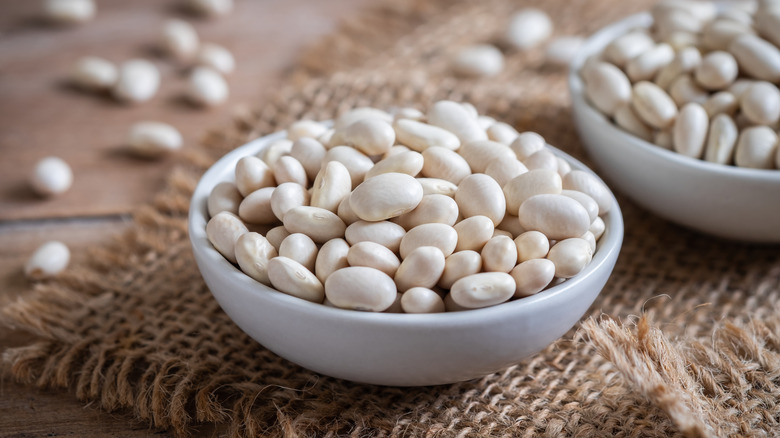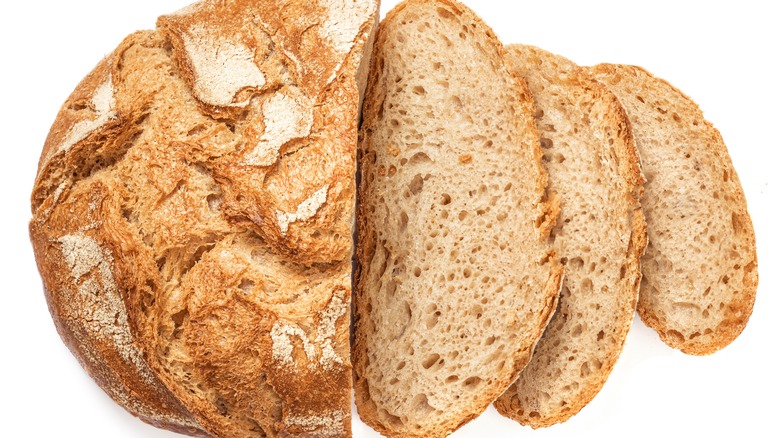The Secret Ingredients Celebrity Chefs Use To Perfect Soup
Some archaeologists believe that soup making is a culinary practice that spans more than 20,000 years and may have included stone age cultures from around the globe, as per NPR. These basic meals could have included everything from whole slabs of meat boiled in water to an almost oatmeal-like dish made from local grains and vegetables.
Today, soup can still be found in various forms across the globe, although recipes are more refined. From the leek and potato combination popular in Western Europe (via Iowa City Press-Citizen), to the umami-rich ramen of Eastern Asia (per Yokocho), soup remains one of society's most beloved dishes. Psychology Today reports that our continued appreciation for the dish is most probably due to the many positive associations we draw from soup, including feelings of childhood comfort and care.
As a simple dish with an incredibly long history, you could easily be deceived into thinking that making the perfect soup is as simple as chucking some ingredients into a pot and waiting for it to boil. You would be wrong. Not only are there some choice methods that should be followed when cooking soup but also several secret ingredients that, when added, can transform a mediocre bowl into something sublime.
Maggie Beer: Chervil
One of Australia's foremost celebrity chefs, Maggie Beer, has a vast amount of culinary knowledge that she uses to improve just about every dish. For her, soup is a winter meal, as exemplified by her preference for soups that utilize roasted winter vegetables (per The Daily Mail). While Beer always suggests taking advantage of seasonal vegetables, another wintertime ingredient she swears by when making soup is chervil, an herb that's been used in cooking and medicine for centuries (via MasterClass).
Speaking on a 2018 episode of the "What the F is for Dinner?" podcast, Beer explained why she preferred to use chervil over other herbs: "Parsley has so many antioxidants, it's amazing but chervil is something you only get in winter, it's really great. What you get is this lovely aniseed flavour that picks up these heartier winter veg." However, MasterClass notes that the herb can quickly lose its flavor when heated. As such, it should be added to soups just before blending or as a garnish when the dish is about to be served.
Ludo Lefebvre: Worcestershire sauce
Michelin-starred French chef Ludo Lefebvre knows a thing or two about making world class soups, especially when it comes to his home country's classic, French onion soup. When creating a version of this soup, Lefebvre, a proudly Gallic chef, includes one very English ingredient, Worcestershire sauce. On including it in his recipe Lefebvre says, "It really brings back more flavors of the beef," (via Food & Wine).
This, according to Southern Living, is thanks to large amounts of umami present within the sauce which helps amplify the flavor of the ingredients around it. A fact which has led Worcestershire sauce to be included in many other notable recipes, including those for Bloody Marys and Caesar salads (per Britannica). The Daily Mail reports that Worcestershire sauce has even been voted Britain's best culinary offering in the past with other top-quality chefs, such as Marco Pierre White and Roopa Gulati, singing the condiment's praises. With such endorsements, you would probably do well to sneak a few drops of Worcestershire sauce into your next soup.
Nacho Selis: Quinoa
As a chef from Peru, Nacho Selis has a natural affinity for quinoa — an affinity rooted in his personal history and that of his country. "Quinoa's ability to flourish high in the Andes was not the only draw for the ancient inhabitants of the region — its rich variety of nutrients like proteins, vitamins, and amino acids made it a staple in the Incan diet. Cooking with quinoa represents a tie to the land where I live and is a nostalgic reminder of my childhood — my grandmother used the grain almost daily," he shared with Here Magazine.
While Selis builds an entire soup around quinoa, the seeds can easily be added to other recipes as a way of lending the soup extra body. The New York Times suggests cooking quinoa separately, a wise piece of advice, as this will allow you to properly control the liquid content of your soup. Not only can quinoa help you improve a soup's texture, but as Selis touched on, the seed's inclusion also brings a whole host of nutritional benefits as well. This is primarily due to quinoa containing all nine essential amino acids, as per Harvard School of Public Health.
Lopè Ariyo: Uda
Growing across West Africa, uda pepper is a very unique-tasting spice which is often used in dishes that contain high levels of chili heat, like pepper soup, as per Ekaterra. Food writer Lopè Ariyo highlights for The Guardian that uda has a warm and earthy taste, which allow uda to sit alongside, and slightly temper, the high levels of spice found in many West African soups.
Today reports that across Africa, uda peppers have many different uses ranging from flavoring coffee to rubbing on meats. So versatile is the flavor of uda peppers that chefs including Ayo Adeyemi are even using the spice to make desserts with great effect, as per The Caterer. Due to this unique flavor, it can be very hard to find a good substitute for uda. However, with the proliferation of African food stores, and the ability to order the spice online, you should easily be able to locate this ingredient when a recipe calls for it.
Rachael Ray: Fresh lemon juice
American celebrity chef Rachael Ray is known for providing her fans with recipes, tips, and tricks that make cooking easier and less time consuming. So, it isn't surprising that her trick for upgrading soup is as simple as can be — just add a squeeze of lemon to the bowl before serving (via Insider).
While hardly groundbreaking, this tip is an extremely useful one. The Seattle Times reports that fresh lemon juice is so effective at elevating dishes because it increases the consumer's level of salivation, a feature which automatically makes foods taste better. What's more, the acidity of lemon juice helps to balance out other flavors by cutting through oily and greasy fats. However, the same publication warns that lemon juice loses its flavor when exposed to heat and may even turn bitter. With that in mind, follow Ray's advice and only squeeze right before you serve.
Seema Pankhania: Tarka
Although not an ingredient in and of itself, we had to include tarka on this list thanks to its ability to transform even the blandest of soups into a riot of flavors. As Go Spice highlights, tarka is a popular Indian cooking technique that involves frying whole or slightly crushed spices with chili and onions in oil or ghee. The frying time is minimal; spices are cooked just until they pop, releasing their essential oils in the form of flavors and aromas.
By pouring tarka on top of a soup you instantly add an incredible amount of flavor, explains British food content creator Seema Pankhania (via BBC). Pankhania recommends using spices such as cumin and mustard seeds which are a fantastic accompaniment to warming vegetable soups. Furthermore, tarka — sometimes known as tadka — can also bring nutritional benefits to your cooking. As food writer Rushina Munshaw Ghildiyal explains, "Tempering also has nutritional benefits, since the hot ghee or vegetable oil helps the spices unlock their healing properties" (via NPR).
Rachel Roddy: Parmesan rind
The Guardian's Rome-based food columnist, Rachel Roddy, provides a tip for developing the flavor and texture of soups while simultaneously reducing waste. Her advice? Save your Parmesan rinds from the bin and chuck them into soups, instead. "I don't often use stock cubes. I just use water and a Parmesan rind — it's like a little flavour bomb," she shares with The Guardian.
MasterClass reports the perfect soup for this type of enrichment is minestrone; a nourishing dish that becomes even more comforting when an umami boost of Parmesan rind is added. Chef Filippo La Gattuta even suggests chopping the Parmesan rind into small squares which impart flavor to the soup and can be eaten, as well (via The Guardian). Finally, if you're on the fence about this ingredient, remember that adding Parmesan rind is a method that has been adopted by many of the culinary industry's foremost brands, including Eataly. In other words, you're in good company.
Marco Stabile: Kombu
Kombu, or dried kelp, is one of the most important ingredients when it comes to Japanese cuisine. Not only is it used to make dashi, a foundational building block of the cuisine (via MasterClass), but it also features in many other Japanese foods, such as kombujime, as per Tatler.
As steeped in Japanese cuisine as it may be, kombu can also benefit soups from a variety of different cultures. The reason why? Kombu is rich in glutamate, one of the substances responsible for umami flavor, as per Umami Information Center.
The versatility of kombu in soups is no better exemplified than in Italian chef Marco Stabile's seaweed ribollita (via Fine Dining Lovers) where it heightens the already hearty nature of the soup. Add to this the seaweed's impressive nutritional value (via The Washington Post) and it's easy to see why kombu could be the secret ingredient behind your favorite and most revitalizing soup.
Bridget Lancaster: V8 vegetable juice
Celebrity Chef Bridget Lancaster is best known for co-hosting TV programs like "America's Test Kitchen" and podcasts like "Proof." But Lancaster is as adept off camera as she is on, especially when it comes to creating delicious yet uncomplicated meals, as per NPR. She manages to do this by including ingenious tricks that cut down on the number and intricacies of cooking processes.
One of her greatest tips comes from making a deep and complex minestrone soup: Just add a smidge of V8 vegetable juice: "Somebody just mentioned, 'Why don't we try V8, like the commercial says?' And V8 was perfect. It gave just the right body to the minestrone, the right seasoning. It was an 8-for-1 instead of a 2-for-1 ingredient, because it has all of those flavors in one shot." (via NPR).
While adding V8 is not a tip suitable for all soups, for example consommé, it's an ingenious option for hearty, vegetable-forward ones. Just be aware that V8 vegetable juice can have a high concentration of salt and should therefore be used sparingly lest your soup become over-seasoned.
Seiji Ando: Katsuobushi
As reported in The New York Times, the key to a fantastic miso soup is all in the katsuobushi, a fact chef Seiji Ando knows all too well. By adding flakes of the fermented, dried bonito fish, Ando creates a smoky, intense dish that's a world away from your standard soup.
Katsuobushi carries so much flavor due to the painstaking process by which it is made. According to Tofugu, the fish is fileted and cooked before being smoked for an entire month. Another six-month process of mold inoculation and aging then takes place to produce the fermented, dried product that many chefs know and love.
Like so many of the ingredients on this list, high levels of umami are what make katsuobushi a flavorful addition to soups, as per Umami Information Center. As such, the dried flakes can be used to supercharge many stocks and soups across cuisines, much in the same way as anchovies play an invisible supporting role in many of our favorite sauces (via MasterClass).
Giada De Laurentiis: White beans
Italian-American celebrity chef Giada De Laurentiis features on our list thanks to an ingenious substitution which can prevent soups from becoming heavy and overly rich. As De Laurentiis' suggests on her Instagram page, for recipes that call for heavy cream, you can switch it out for white beans.
It's important to point out that this substitution works best for soups that are going to be blended, as the beans must be blended to add the luxurious texture associated with cream. Not only does this result in a soup with great texture, it also makes it healthier. Dietician Laura Burak explained this to Livestrong: "If you swap in beans for heavy cream, it's a way to provide a creamy texture and thickness while cutting down on saturated fat and unnecessary calories in soups and other dishes [...] Plus, beans work well to turn dairy-based dishes into vegetarian and vegan options."
Rachel Stockley: Bread
As a professional chef based in Great Britain, Rachel Stockley is constantly looking to reduce waste. Given that bread is Britain's most wasted food (via BBC), there is no better place to start than with bread. Speaking to The Guardian, Stockley highlights her favorite ways to save bread from the bin: "[Bread] can be stretched out as breadcrumbs for topping oven bakes or as croutons to bulk out salads. I like to blend torn stale bread into soups to thicken them, like our garlic soup. It is four main ingredients: chicken stock, a garlic bulb, bread, olive oil."
Bread-laden soups also form an integral part of Italian cuisine as Italy Magazine highlights. So, if you are looking to add bread to your favorite soups, we suggest drawing on this cuisine as inspiration. A great place to start is with the Tuscan classic, ribollita, or a pancotto bread soup.
